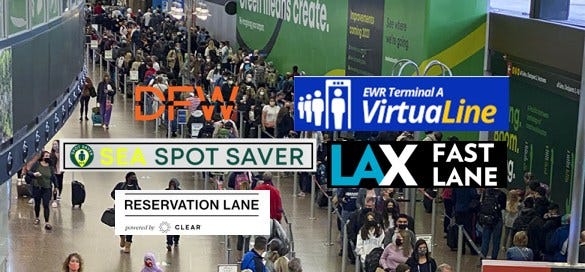
Airline passengers don’t like long lines to reach their flights. Neither do the airports and a handful think they can do something about it. Five are now offering programs for fliers to reserve a spot in line, for free. Will it work?
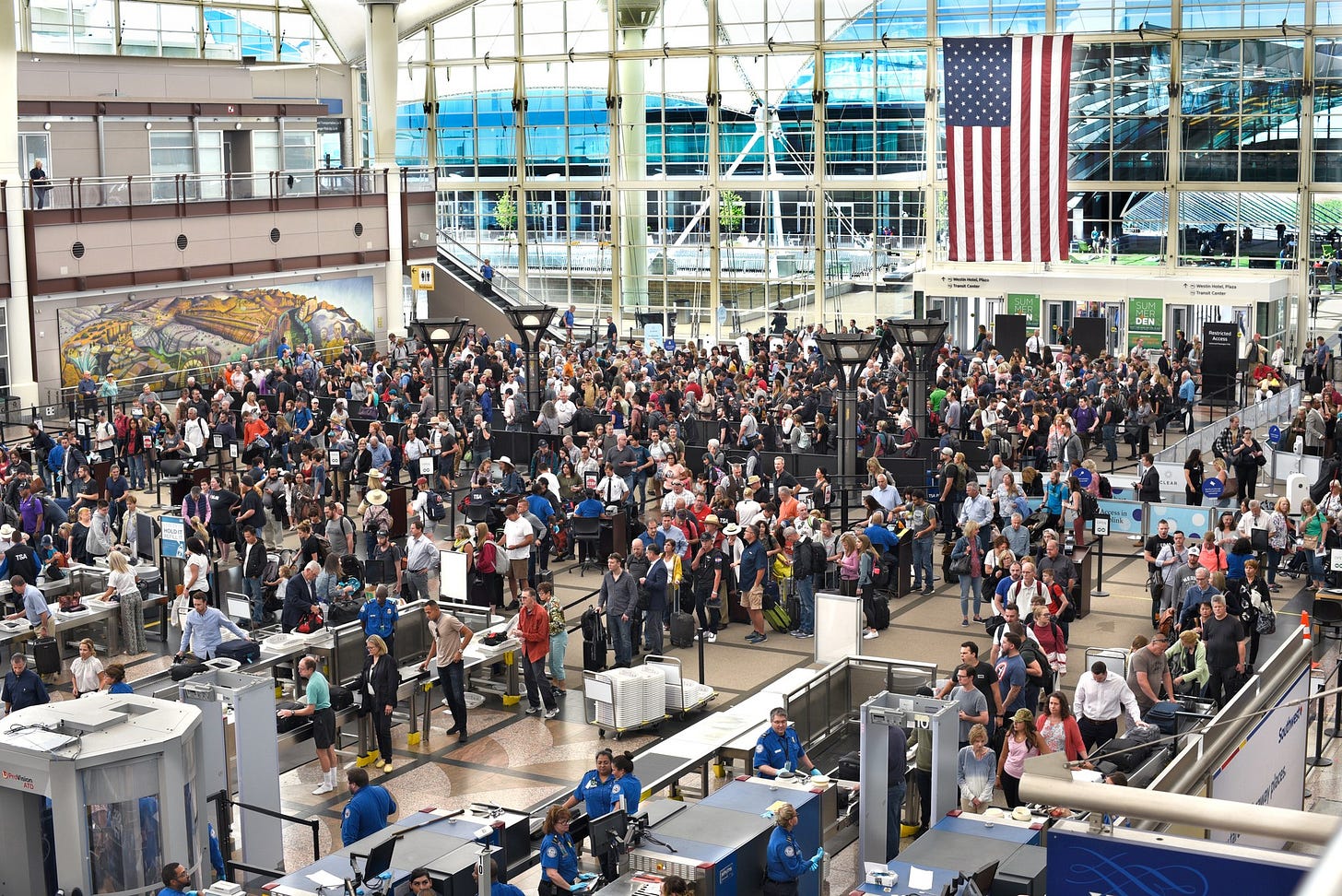
Airplane passengers line up for TSA security screenings at Denver International Airport in Denver, Colorado in 2019. (Photo by Robert Alexander/Getty Images)
AIRPORTS TAKE ACTION
First, let’s understand the players and the targets. Airports are responsible for the lines into security checkpoints. In airport lingo, airports own those lines. The Transportation Security Administration (TSA) owns the checkpoints and the airlines own the lines at the gates. We are only talking about the lines leading to TSA checkpoints. The targets are, for the most part, leisure travelers. They are the fliers who take one or two flights a year, are not part of “trusted traveler” programs, and use the general security lines. Those are the lines that often get backed up with waits that can exceed TSA’s goal of less than 30 minutes.

What the airports hope to change is human behavior. Fliers are told to arrive two hours early for a flight. Some of those passengers may be worried and add time, or get in line long before that might be necessary. At peak departure times, this can mean long lines. “Half of those in line don’t need to be in line that early, “ says Lance Lyttle the Airport Director for Seattle-Tacoma International Airport (Sea-Tac).
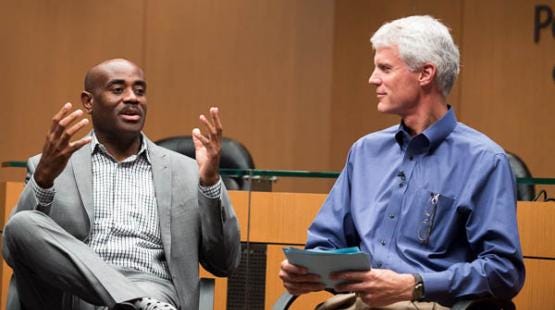
On left, Lance Lyttle the Sea-Tac Airport Director. (Credit: Seattle-Tacoma International Airport)
HOW DOES IT WORK?
One of the variables for airport lines is what is known as TSA throughput, or how many passengers are screened per hour. No matter how many passengers are in line, that variable doesn’t change. So airports are using these programs to “meter-in” passengers into lines with the hope of making the queue smaller and more manageable.
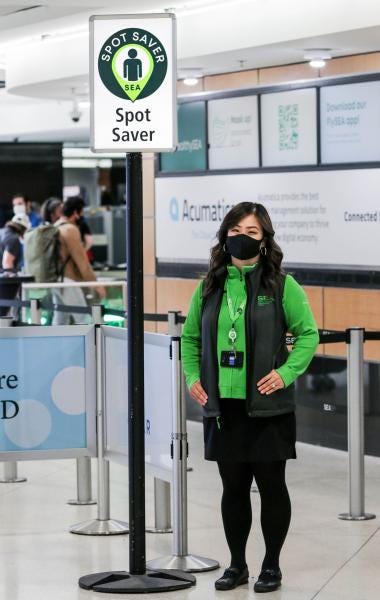
(Credit: Seattle-Tacoma International Airport)
You may have experienced a similar system if you have used “FastPass” at one of the Disney amusement parks. Sea-Tac proudly says this is the first airport in the country to implement such a solution. It’s called Spot Saver. Passengers sign up with their phone number and flight number and they are given a reservation, a time to get in line. When they show up, they go to the front of the general security line into the TSA checkpoint. Basically, the fliers are cutting the line if they show up at the appointed time.
WILL IT WORK?
One might wonder, does that mean those without a reservation will wait longer? It is a possibility. But, Lyttle contends that by keeping the lines shorter and “zippering-in” those with reservations wait times should decrease for all passengers. He says 90% of those using the program are, “very satisfied.” The program is so new the airport doesn’t yet have solid data to prove waits are shorter.
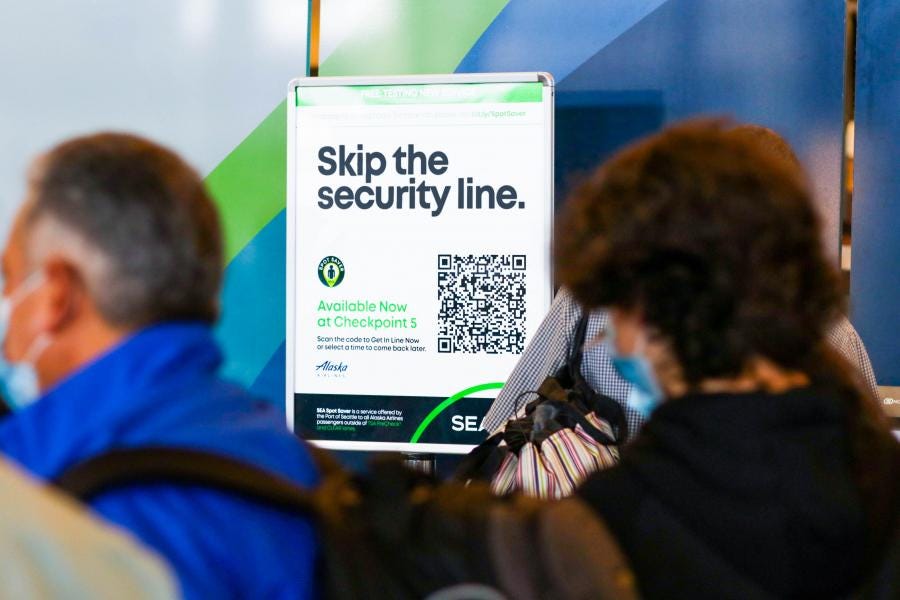
(Credit: Seattle-Tacoma International Airport)
Already, Los Angeles, Dallas, Newark, and Orlando airports are rolling out similar programs with different names. Sea-Tac’s Director on Innovation Dave Wilson predicts these programs, “will be everywhere in a year.” The goal, he says, is to get wait times to 15 minutes.

(Credit: Los Angeles World Airports)
There were three reasons for creating the program at Sea-Tac with one being COVID related:
-Six feet of separation between passengers.
-A better experience for those travelers.
-Lower the number of people in line during peak periods.
WILL THIS SPREAD?
For Sea-Tac the peak is in the morning hours. For other airports it is the afternoon-early evening peak that is the problem.
The Sea-Tac team believes this is just the beginning. The app could be expanded to alert passengers where they should be at any given time during their journey to an aircraft. With GPS the app might tell a passenger when it is time to leave that coffee shop and head to the gate.

(Credit: Seattle-Tacoma International Airport)
Airports don’t like lines and unhappy travelers. This technology may help. Let's see what the data shows.




